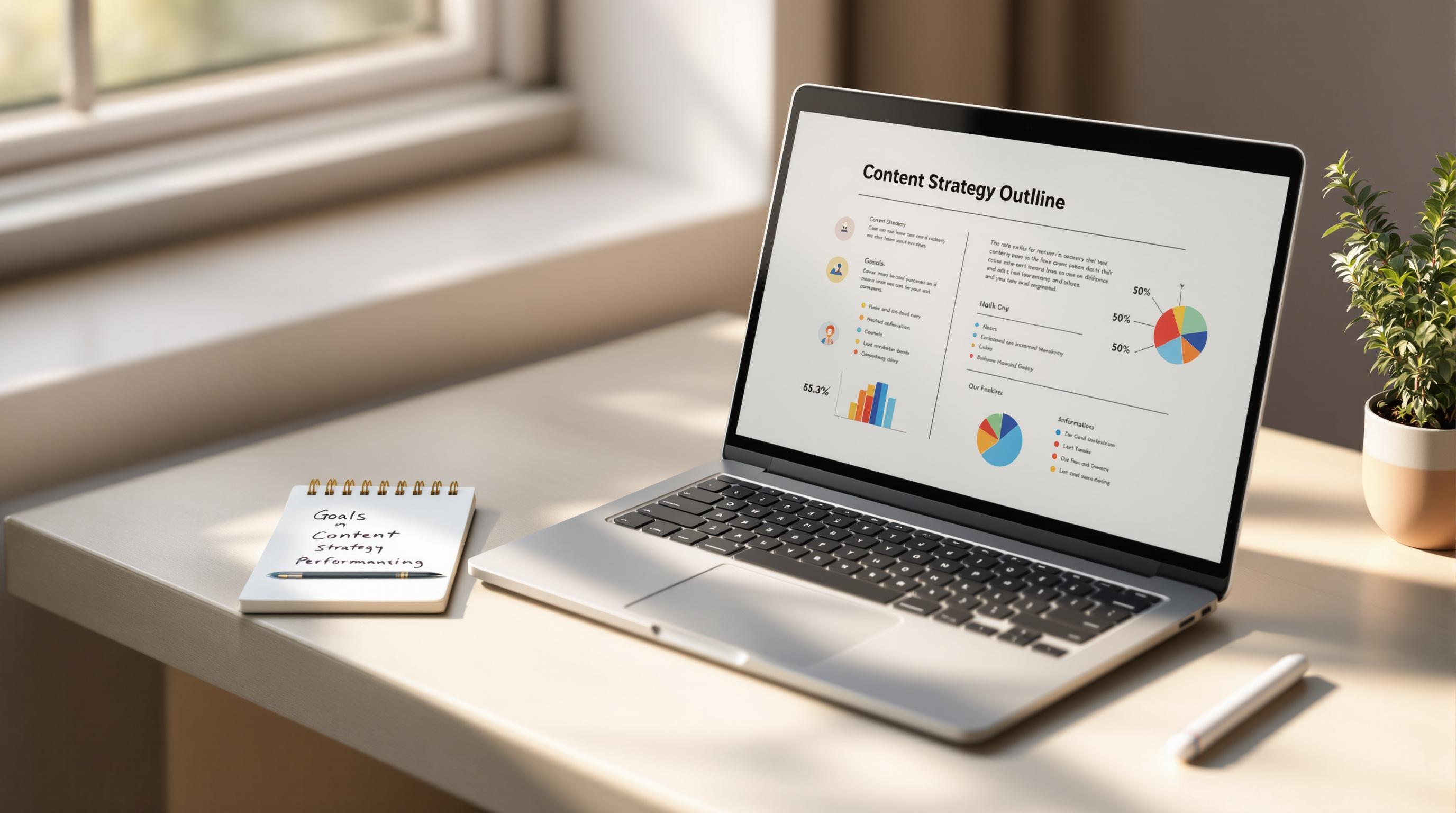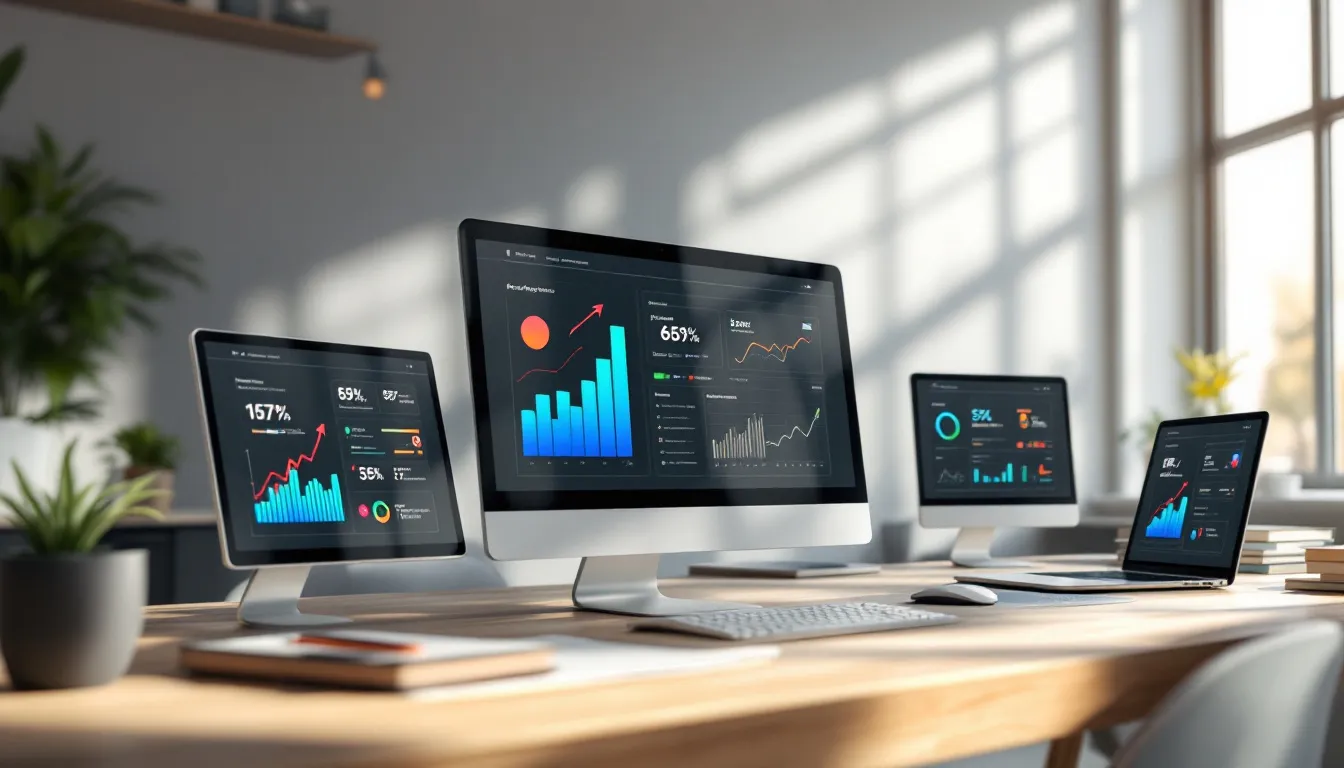Want to boost your customer retention? Here's how to nail the timing of your win-back campaigns:
- Collect customer data (purchases, engagement, etc.)
- Study drop-off patterns
- Find the best outreach times
- Test different timing strategies
- Implement and adjust your plan
Key points:
- Use data to personalize your approach
- Group customers by behavior
- Track metrics like open rates and conversions
- Keep testing and tweaking your strategy
| Step | Focus | Why It Matters |
|---|---|---|
| 1 | Data collection | Understand customer behavior |
| 2 | Pattern analysis | Spot at-risk customers early |
| 3 | Timing optimization | Reach out when customers are most receptive |
| 4 | Testing | Find what works best for your audience |
| 5 | Implementation | Put insights into action and measure results |
Remember: Keeping existing customers is cheaper than finding new ones. A 5% increase in retention can boost profits by 25-95%.
Related video from YouTube
Step 1: Collect and Sort Customer Data
To kick off a killer win-back campaign, you need solid customer data. Here's how to gather and organize it:
Past Purchase Records
Your customers' buying history? It's a gold mine. Here's what to dig for:
| Data Point | What It Tells You | Why It's Gold |
|---|---|---|
| Last purchase date | How recently they bought | Spots at-risk customers |
| Purchase frequency | How often they buy | Shows loyal vs. occasional buyers |
| Average order value | How much they spend | Helps craft personalized offers |
| Product categories | What they like | Guides targeted recommendations |
Analyze these numbers and you'll see patterns. Use them to shape your win-back game plan.
Customer Journey Stages
Where do customers usually drop off? Let's break it down:
1. Awareness: How they find you
2. Consideration: How they engage with your stuff
3. Purchase: Conversion rates and cart abandonment
4. Retention: Repeat purchases and time between orders
5. Advocacy: Referrals and social media shout-outs
Spot where customers lose interest, and you can fix issues before they bail.
Signs of Customer Loss
Catch these red flags early:
- They stop opening your emails
- They buy less often
- Their orders get smaller
- They complain more
- They ignore your promos
"65% of a company's business typically comes from existing customers." - Zippia
That's why keeping customers is so crucial. Spot these signs, and you can swoop in before they're gone for good.
Group Customers by Actions
Sort your customers by behavior to target your win-back efforts:
- How recently did they buy?
- How often do they buy?
- How much do they spend?
- What do they usually buy?
- How do they interact with your brand?
Group them this way, and you can craft win-back messages that hit home for each segment.
Step 2: Study Customer Drop-off Patterns
After sorting your customer data, it's time to dig into why customers stop buying. This step is key for creating win-back strategies that work.
Time Until Customers Leave
How long does it take for customers to become inactive? This varies by industry:
- B2B businesses: 6.77% churn rate
- B2C businesses: 9.91% churn rate
- Software companies: 4.75% churn rate
- Retail and CPG: 7.55% churn rate
Track the time between a customer's last purchase and when you consider them "lost". This helps you spot the best time to reach out.
Seasonal Changes
Customer behavior often changes with the seasons. Here's how to spot these patterns:
Look at your sales data throughout the year. Do you see any regular ups and downs? Think about how things like holidays or weather might affect buying habits.
For example: A swimwear brand might see fewer sales in fall, while a ski equipment company might sell more.
Industry Standards
How do your drop-off rates compare to others in your field? Here's a quick look at average churn rates:
| Industry | Average Churn Rate |
|---|---|
| Software | 4.75% |
| Digital Media / Entertainment | 6.42% |
| Education | 7.22% |
| Retail and CPG | 7.55% |
| Business and Professional Services | 6.59% |
| Healthcare | 6.03% |
If your rates are higher, it's time to figure out why customers are leaving.
How Often Customers Buy
Keep an eye on how often customers buy from you. Watch for:
- Less frequent orders
- Smaller orders over time
- Longer gaps between purchases
These signs often mean a customer might leave soon. If someone who used to buy monthly now only buys every few months, they might be slipping away.
"Improving customer retention rates by just 5% can increase profits by at least 25%." - Bain & Company
This shows why understanding drop-off patterns matters so much. Spot at-risk customers early, and you can take action to keep them around.
Step 3: Find the Best Time to Reach Out
Timing can make or break your win-back campaigns. Let's look at how to nail the perfect moment to reconnect with inactive customers.
Best Contact Times
People interact with brands at different times. Here's a quick guide:
| Day | Time | Why |
|---|---|---|
| Tuesday - Thursday | 10 AM - 2 PM | Work hours, email-checking time |
| Saturday | 10 AM - 12 PM | Weekend browsing |
| Avoid | Monday mornings & Friday afternoons | Too busy or winding down |
But remember: These are just guidelines. Your audience might be different. Always test and tweak based on your results.
Customer Response Times
To time your outreach better, look at:
- When customers usually buy (purchase cycle)
- When they open and click your emails
- Peak times for your website traffic
For example: If Mark typically buys every 30 days but hasn't in 45, it's time for a personalized reactivation message.
Timing Effects
Get your timing wrong, and you might:
- Annoy customers who are still engaged (too early)
- Lose customers to competitors (too late)
Get it right, and you'll catch customers when they're most open to your message.
Here's a fun fact: Re-engaging inactive customers costs 5 times less than getting new ones. So, timing really matters!
Customer Schedule Analysis
Want to nail your timing? Dive into your customers' schedules:
1. Group your audience: Sort customers by buying patterns and engagement.
2. Look at past behavior: When does each group usually buy or engage?
3. Think about external factors: How do seasons, holidays, or industry events affect your customers?
4. Personalize your timing: Don't use a one-size-fits-all approach. Tailor your outreach to each customer group.
For instance: Jamie buys every 90 days? Don't send a reactivation message at 45 days. Instead, try suggesting complementary products to boost her lifetime value.
"It's not about bombarding customers with messages. It's about reaching out when they're most likely to re-engage." - Isabelle Henry, Head of Content Marketing and Growth, Actito
sbb-itb-645e3f7
Step 4: Test Your Timing
You've got your data and ideas for win-back timing. Now it's time to put them to the test. Here's how:
Compare Different Times
Test various message times against each other. This helps you find out when your customers are most likely to respond.
| Time Slot | Pros | Cons |
|---|---|---|
| Weekday mornings | People check emails | Inbox might be full |
| Weekday evenings | Less competition | Family time might interfere |
| Weekends | More free time | Generally lower open rates |
But don't just take our word for it. Your audience might be different, so always test and tweak.
Set Up Test Groups
Create groups to measure how different timing strategies work:
1. Control group: Keep your current timing
2. Variation groups: Try new timings based on your data
Let's say you usually send win-back emails after 90 days. Try testing at 60, 75, and 105 days too.
Track Results
Keep a close eye on how customers respond to different times. Look at:
- Open rates
- Click-through rates
- Conversion rates
- Unsubscribe rates
David Hoos, Former Director of Marketing at The Good, puts it well:
"Never assume your results will be the same as the case study you read."
In other words, what works for others might not work for you. That's why testing is key.
Check Data Accuracy
Make sure your timing changes are actually making a difference:
1. Use statistical significance. Don't jump to conclusions too quickly.
2. Account for external factors. Things like seasons or promotions can mess with your results.
3. Give your tests enough time. You need meaningful data, not just a quick snapshot.
Campaign Monitor offers a practical tip:
"Consider setting up your next campaign as an A/B test to see what subject line length works best for your audience."
You can apply this same idea to timing. Test different send times and see what works best for YOUR audience.
Step 5: Put Your Plan in Action
You've done the groundwork. Now it's time to launch your win-back timing strategy. Here's how to make it happen:
Set Up Your Timing Plan
Create a schedule for your win-back messages based on your data analysis. Here's a sample plan:
| Customer Group | Timing | Message Type |
|---|---|---|
| Recent Inactive (30-60 days) | Day 45 | Gentle reminder |
| Mid-term Inactive (61-90 days) | Day 75 | Special offer |
| Long-term Inactive (91+ days) | Day 100 | Last chance |
But remember: Your timings should be based on YOUR customer behavior patterns.
Track Results
Keep tabs on how your timing strategy performs. Focus on these metrics:
- Open rates
- Click-through rates
- Conversion rates
- Revenue from win-back campaigns
Use an email marketing platform like Mailchimp or Klaviyo to track these easily.
Make Changes as Needed
Don't just set it and forget it. Review your results and tweak your approach regularly.
If open rates are low? Try different subject lines or sending times.
Click-through rates are poor? Revamp your email content or offers.
Conversion rates are low? Take another look at your landing pages or checkout process.
"We saw a 15% increase in win-back conversions just by adjusting our email send times based on customer engagement data." - Sarah Johnson, Email Marketing Manager at Shopify
Measure Success
Your win-back timing strategy should boost your bottom line. Track these metrics:
- Customer retention rate
- Customer lifetime value
- Revenue from reactivated customers
Here's a real-world example: A subscription-based newspaper recovered 5% of $100,000 in lost subscriptions with win-back emails. That's $5,000 reclaimed at a fraction of the cost of acquiring new subscribers.
And here's something to chew on: In the U.S., 40% of revenue came from returning customers, who were only 8% of all website visitors. That's the power of effective win-back strategies.
Helpful Tools
Let's dive into some tools that'll supercharge your customer win-back efforts. These will help you crunch numbers, track behavior, and nail your timing.
Data Analysis Tools
You can't win back customers if you don't understand them. Here are some top-notch tools for data analysis:
| Tool | What It Does | Who It's For |
|---|---|---|
| Microsoft Power BI | Makes data pretty and easy to understand | Marketers who hate complex charts |
| Tableau | Lets you play with data visually | Brands that need to dig deep into their numbers |
| Qlik Sense | Helps you interact with your data | Marketers looking to make smarter choices |
| Zoho Analytics | Builds custom reports and dashboards | Anyone tracking customer data |
Fun fact: Lenovo uses Tableau. If it's good enough for them, it might be worth a look for you too.
Customer Tracking Systems
Want to know what your customers are up to? Check these out:
- Userpilot: Great for product analytics. Starts at $249/month.
- Hotjar: Shows you how people use your site. Plans from $32/month.
- Amplitude: Tracks customer journeys. Kicks off at $49/month.
Data Charts and Graphs
Sometimes a picture is worth a thousand spreadsheets. Try these:
1. Google Charts
Free and easy to use. No coding PhD required.
2. Infogram
Offers templates and real-time data integration. Various pricing options available.
3. D3.js
For the coding wizards out there. Highly customizable, but requires some tech know-how.
Timing Software
Timing is everything in win-back campaigns. These tools can help:
- Churnly: Predicts churn with 92-96% accuracy. Helps you stop problems before they start.
- Vitally: Uses "Health Scores" to spot at-risk customers. Combines data, analysis, and teamwork.
- ChurnZero: Generates a "churn score" based on user data. Helps you keep customers engaged at every stage.
Want more? Check out the Content and Marketing directory for a treasure trove of customer engagement tools.
Summary
Analyzing customer win-back timing is key for keeping customers around. Here's what we've covered:
Data-Driven Approach
Use customer data to fuel your win-back campaigns. Look at:
- What they've bought
- How they interact with your brand
- What they're saying about you
Segmentation
Split your inactive customers into groups:
| Segment | Time Inactive | What to Do |
|---|---|---|
| New Ghost | 30-60 days | Friendly nudge |
| Mid-Ghost | 61-90 days | Special deal |
| Long-Gone Ghost | 91+ days | Last chance offer |
Timing
Tuesday to Thursday mornings (8-10 am) used to be the go-to. But now:
- Late-night emails (8 pm to 11:59 pm) get opened 21.7% of the time
- Weekend emails see a 17.8% open rate
"Keeping customers is easier than finding new ones." - Emotive Marketing Insights
Make It Personal
Use what you know about your customers. Try something like:
"Hey Sarah, missing your favorite coffee? Here's 15% off to bring you back."
Don't Just Email
Mix it up with SMS:
- It can bring in $27 for every dollar spent
- Over half of all emails are read on phones now
Keep Testing
Always try new things:
- Send the same email on Sunday to some folks, Monday/Tuesday to others
- See what works better and do more of that
Know Your Goals
Track these to see how you're doing:
- How many customers stick around
- How much they spend over time
- Money from customers you've won back
Fun fact: Customers you bring back spend about $1,410 on average, compared to $1,262 for first-time buyers.
FAQs
What is the strategy for win-back customers?
Win-back strategies are all about quick action and offering real value. Here's the breakdown:
| Strategy | What It Means |
|---|---|
| Act Fast | Jump on it when customers go quiet |
| Get Personal | Make your message fit each customer |
| Offer Value | Give them a reason to come back |
| Build Trust | Reconnect on an emotional level |
Different customers leave for different reasons. But here's a key fact: 94% of customers are more likely to buy again after great customer service. So, understanding what each customer needs is crucial for bringing them back.
How do you Analyze customer churn data?
Digging into churn data is key for keeping customers around. Here's how to do it:
1. Use predictive analytics
Get ahead of the game. Use smart tech to spot who might leave before they do. It's like having a crystal ball for your customer base.
2. Focus on subscription metrics
If you're in the subscription game, keep an eye on these numbers:
- Monthly Recurring Revenue (MRR)
- Customer Lifetime Value (CLV)
- Churn Rate
These tell you how much churn hurts your wallet and why keeping customers is so important.
3. Look at customer groups
Don't treat all customers the same. Break them down by:
- What they've bought
- How much they engage
- Who they are
This helps you tailor your win-back plans to each group.
"Churn analysis can uncover new ways to boost customer retention and make your business stronger."
Here's a fun fact: 2 out of 3 companies look at their churn data every month. It's like taking your business's pulse regularly to keep it healthy.


